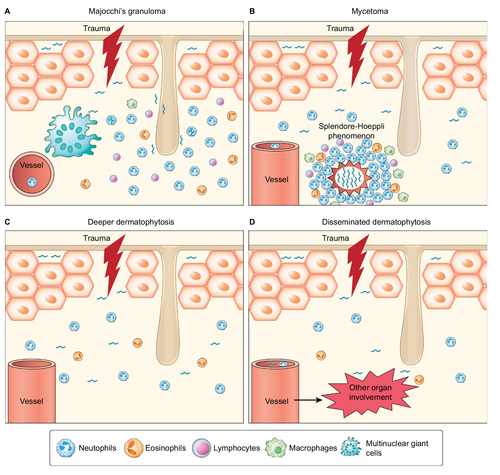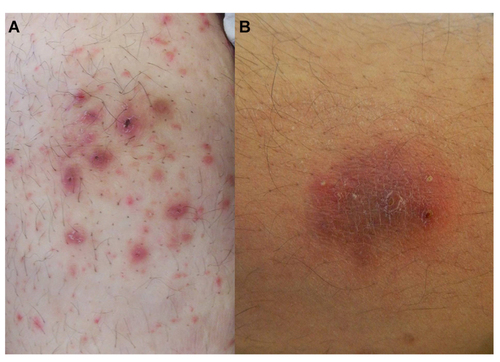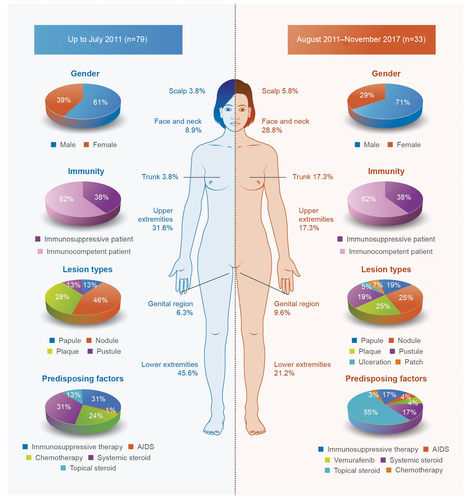Figures & data
Figure 1 Pathogenesis of invasive dermatophytosis.

Figure 2 Multiple erythematous papules and nodules with scales and/or crusts are located on the anterior surface of the abdomen in a patient with Majocchi’s granuloma (A). Erythematous plaque with pustules, scales, and crusts on the lateral side of the arm in a patient with Majocchi’s granuloma (B).

Figure 3 Clinical characteristics of the patients with MG reported in the literature: location of the lesions, sex, immunity, predisposing factors, and type of lesion.

Figure 4 Histopathological findings of a patient with MG.
Abbreviations: MG, Majocchi’s granuloma; PAS, periodic acid-Schiff staining; HE, hematoxylin and eosin.

Table 1 The causative fungi that were isolated from patients with MG
